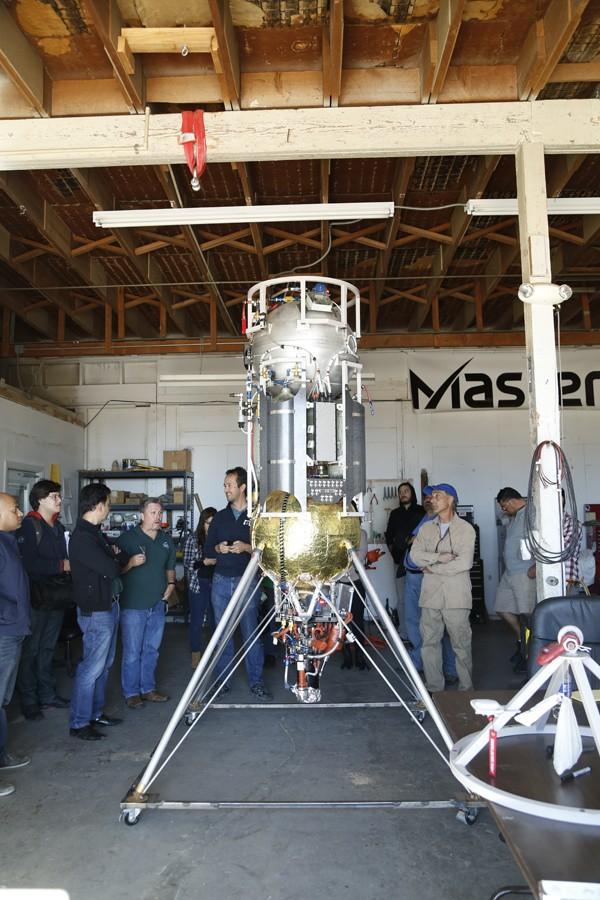Aerospace Presentation
Engineer Eric Franks gives a tour of the Masten lab at the Mojave Airport location.
Glendale College’s Aviation and Space Club hosted a guest speaker, Erik Franks, who works in operation and business development for Masten Space Systems, on Nov. 10 in Kreider Hall.
Masten builds and flies autonomous rockets. The small entrepreneurial company has been around for 11 years. Franks says: “The goal is not to stay with very small vehicles for a long time, it’s a good start for technology and the company that will develop for bigger space transportation projects.”
Franks explained the mechanism of rocket clarity with powerpoint and videos.
The vehicles are powered with isopropyl alcohol and liquid oxygen. They take off and they land vertically. They’ve flown up to a kilometer or half a mile.
“The big thing that we offer is reusability,”Franks said. “Most space vehicles now take off near the ocean, drop off their second stage and then they land in the ocean and that’s the end of it.”
In addition, he introduced rockets like Astrobotic Fright and the JPL ADAPT G-FOLD Flight.
They’ve been successful in their missions so far since their vehicles have a teeter to make sure they don’t collapse or crush the engine.
“All of these vehicles are getting close to free flight, but we want to make sure they’re very safe before we take them off the teeter.”
President of GCC’s Aviation and Space Club Jonathan Hyman said he hopes Franks’ presentation was an eye-opener for those who attended.
“This stuff is happening in such close proximity to Glendale, its amazing how much aerospace is going on around us,” he said.
Whether attendees were just starting out in the field or deepening their understanding, Hymans says: “The big picture is to basically go beyond earth and extend humanity to mars and beyond in order to explore the solar system and get to know our backyard,” Hyman said. “Having reusable rockets is super important for that.”
“Also, science — in general — improves with these launches,” Hyman added. “When we went to the moon, we basically developed hundreds and hundreds and hundreds of technologies that if we never went, we would have never had.”
The general demographic of the club includes an older generation of college students. While most of them are adult members, the youngest is 16 years old.
“The Aviation and Space Club is not like the other clubs on campus … We’re not doing donut drives and things like that, we’re bringing in some really great speakers, doing fly-ins and it’s really student run,” said Rob Newman, one of three advises of the Aviation and Space Club. “The advisers don’t drive it. We supervise and give guidance, but to a certain extent, we step back and stay largely out of the way… because as much as anything else, it’s about learning leadership and organization and aviation, but still making sure it’s what the members want.”
The club’s biggest events are: aviation seminars, presentations with the Federal Aviation Administration (FAA) reps in the spring and fly-ins to the Mojave Desert.
The Aviation and Space Club meets Tuesday nights at 6 p.m. in Aviation and Arts 103. During the meeting, they have guest speakers and plan meetings.

Yu Sugita was born and raised in Japan. She moved to the US in 2013. She is earning her degree in mass communications at GCC and wants to transfer to a...

Kathy Bakowicz, an international student from Sweden, is in her second semester at GCC. She is studying all forms of photography and hopes to go pro...

